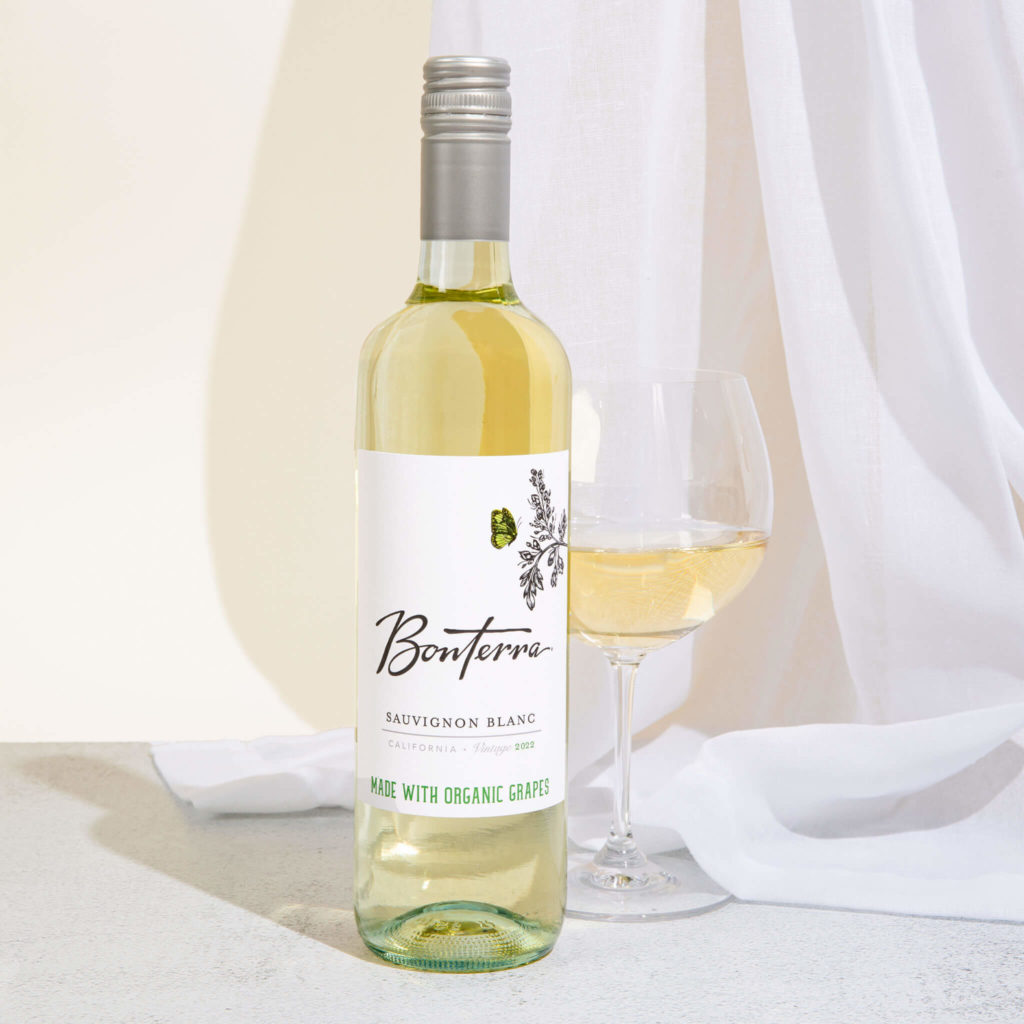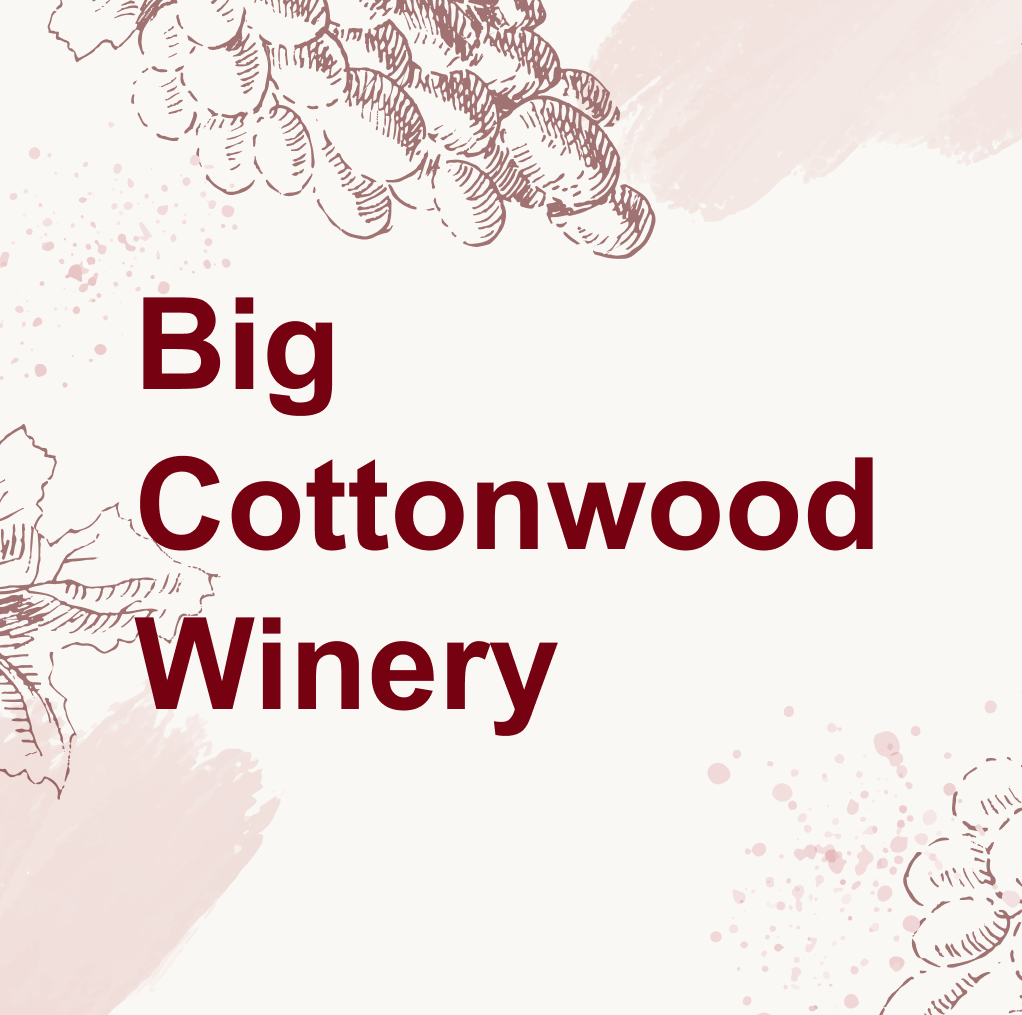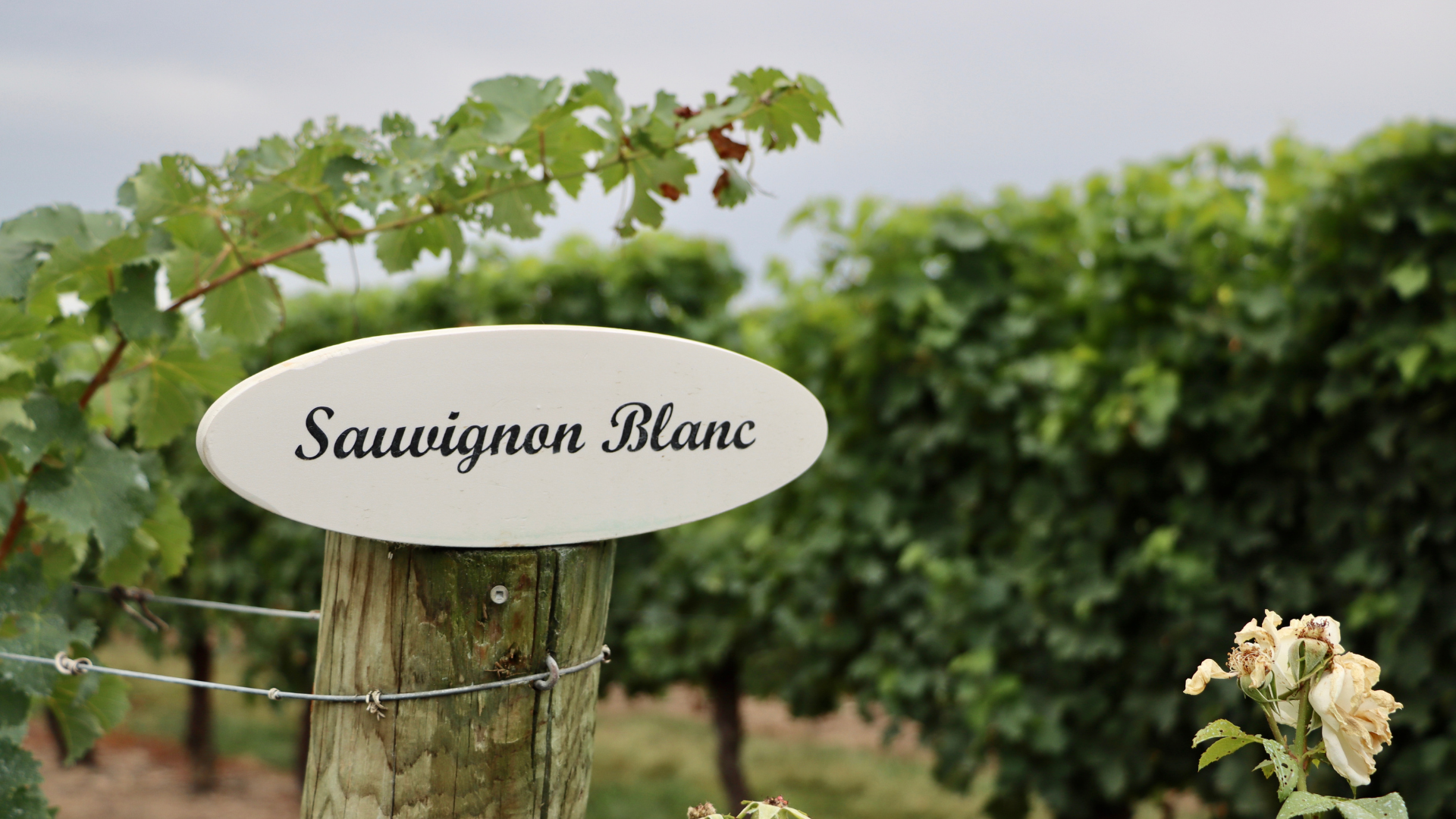If you’re a fan of Sauvignon Blanc wines but find yourself unsure whether they are sweet or not, you’re in good company. This particular variety can vary greatly between wineries and even within the same bottle! From heavily oaked to extra-dry options, it can be difficult to know what to expect when pouring a glass.
Inside this blog post, we’ll answer your questions about ”Is Sauvignon Blanc Sweet?”, taking you through the nuances of Sauvignon Blanc’s taste profile and providing expert guidance on how best to pair the elusive liquid with a meal.
1. What is Sauvignon Blanc?
Sauvignon Blanc, a celebrated white wine grape variety, has captured the hearts of wine connoisseurs worldwide with its unique and vibrant character. Originating in the Bordeaux region of France, this green-skinned grape has spread its roots across the globe and now thrives in diverse wine-producing regions, each contributing to its fascinating range of flavors and styles.

Sauvignon Blanc wines are known for their unmistakable crispness and refreshing acidity, making them a favorite choice for those seeking an invigorating and palate-cleansing experience. The grape’s versatility allows winemakers to craft an array of styles, from zesty, herbaceous, and mineral-driven offerings to luscious, tropical-fruity renditions, and even the occasional sweet dessert wine.
2. Is Sauvignon Blanc Sweet?
Sauvignon Blanc wines can vary in sweetness levels, so whether a particular Sauvignon Blanc is sweet or not depends on the specific wine you’re considering. Sauvignon Blanc is a versatile grape that can produce a range of wine styles, from bone-dry to off-dry (slightly sweet) and even sweet dessert wines. The sweetness in Sauvignon Blanc wines is influenced by factors such as grape ripeness, winemaking techniques, and the winemaker’s intended style.

2.1. Why is Sauvignon Blanc sweet?
While encountering sweet Sauvignon Blanc is relatively uncommon, several factors contribute to its occasional sweetness.
The key factor in determining a wine’s sweetness is the presence of residual sugar post-fermentation. It is the absence of this sugar that contributes to a wine’s dryness.
To create a sweet Sauvignon Blanc, the winemaking process might involve stopping fermentation before it is fully complete. This results in leftover sugar in the wine, leading to a sweet or off-dry taste.
Additionally, the presence of residual sugar can be attributed to the grape being cultivated in a warmer region, where the sugar content exceeds the yeast’s capacity for conversion. The yeast may perish before all the sugar has been transformed due to the grapes’ heightened exposure to sunlight and increased sugar content.
Sauvignon Blanc can also be utilized in various dessert wine production methods, including the addition of sugar or the concentration of the grape’s sugars into a syrup. For instance, Sauternes is created through the concentration of the grape’s sugars, contributing to its luscious, sweet, and aromatic character.
3. Understanding Sauvignon Blanc: Sauvignon Blanc’s characteristics
Sauvignon Blanc is renowned for its distinctive and vibrant characteristics, both in terms of flavor and aroma profiles. These characteristics can vary somewhat depending on factors like the region of production and winemaking techniques, but there are some common themes associated with this grape variety:
3.1. Aroma Profiles
- Citrus: Sauvignon Blanc often exhibits bright citrus notes, including zesty lemon, lime, and grapefruit. These citrus aromas are typically fresh and lively.
- Grassy or Herbal: Many Sauvignon Blanc wines feature herbal or grassy aromas, often described as freshly cut grass, green bell pepper, or even herbs like basil and lemongrass. These earthy elements contribute to its distinctiveness.
- Tropical Fruits: In some warmer climates, Sauvignon Blanc may showcase tropical fruit aromas like pineapple, passion fruit, and guava. These can add a layer of richness to the wine’s bouquet.
- Mineral Notes: Some Sauvignon Blancs have mineral or flinty aromas, akin to wet stones or crushed gravel. These mineral hints can give the wine a sense of terroir, reflecting the soil and environment where the grapes were grown.
3.2. Flavor Profiles
- Crisp Acidity: Sauvignon Blanc is known for its high acidity, which contributes to its refreshing and palate-cleansing qualities. The acidity is often likened to biting into a green apple or a fresh lemon.
- Herbaceous or Grassy: The herbal and grassy notes found in the aroma often translate into the wine’s flavor profile. You might detect flavors reminiscent of green bell peppers, basil, or cut herbs.
- Citrus Zest: The citrus aromas frequently carry over to the palate, with flavors of lemon, lime, and grapefruit zest. This citrusy brightness is a hallmark of Sauvignon Blanc.
- Mineral or Flinty: Some Sauvignon Blancs exhibit a mineral or flinty quality in their taste, adding complexity and a sense of place to the wine.
3.3. Texture
Sauvignon Blanc typically has a light to medium body, which contributes to its refreshing nature. The wine often finishes with a clean and crisp mouthfeel.
Sauvignon Blanc is prized for its refreshing acidity, lively citrus notes, and herbaceous or grassy undertones. These characteristics make it a versatile wine that pairs well with a variety of foods and occasions, from seafood and salads to light poultry dishes. The specific flavor and aroma profiles may vary from one Sauvignon Blanc to another, but its vibrant and refreshing qualities remain a constant.
4. Sauvignon Blanc popularity
Sauvignon Blanc is an incredibly popular white wine grape variety known for its versatility and distinctive characteristics. It is widely planted and produced in various wine regions around the world. Some of the regions where Sauvignon Blanc is commonly grown and celebrated include:

France:
- Bordeaux: In Bordeaux, Sauvignon Blanc is often blended with Sémillon to create white Bordeaux blends. These wines are known for their crispness and are a key component of famous appellations like Pessac-Léognan and Graves.
- Loire Valley: Sauvignon Blanc shines in the Loire Valley, particularly in subregions like Sancerre and Pouilly-Fumé. These wines are renowned for their minerality and vibrant acidity.
- New Zealand:
- Marlborough: New Zealand, especially the Marlborough region on the South Island, has gained international acclaim for its Sauvignon Blanc. These wines are characterized by intense citrus and tropical fruit flavors.
United States:
- California: California’s Sauvignon Blanc is produced in various regions, including Napa Valley and Sonoma County. Californian Sauvignon Blanc tends to be fruit-forward and can display a range of flavors, from citrus to melon.
- South Africa:
- Stellenbosch: South African Sauvignon Blanc has been gaining recognition for its quality. The wines often feature tropical fruit and herbaceous notes.
- Australia:
- Margaret River: Sauvignon Blanc is cultivated in the Margaret River region of Western Australia. These wines are known for their balance between fruitiness and acidity.
Chile:
- Casablanca Valley: Sauvignon Blanc from the Casablanca Valley is celebrated for its crispness and citrus flavors. The cool climate here is well-suited to this grape variety.
- Italy:
- Friuli-Venezia Giulia: In northeastern Italy, Sauvignon Blanc is known as Sauvignon and is grown in the Friuli region. These wines can have a range of flavors, including citrus and green apple.
See More:
- How Many Cubic Feet Is A 24 Bottle Wine Cooler?
- Tempranillo vs Malbec: Which wine is Stronger?
- The 12+ BEST Wine Pairing With Grilled Pork Chops
5. Factors Influencing Sweetness in Wine
The sweetness level in Sauvignon Blanc wine, like in most wines, is influenced by several key factors. Understanding these factors can help you appreciate and select wines according to your taste preferences.
Grape Ripeness:
- Harvest Timing: The timing of grape harvest is a critical factor. Grapes picked early in the harvest season tend to have higher acidity and lower sugar levels, resulting in a drier wine. Conversely, grapes left to ripen longer on the vine accumulate more sugars, potentially leading to a sweeter wine.
- Brix Levels: Winemakers measure grape ripeness using a scale called “Brix.” Higher Brix levels indicate riper grapes with more sugar content, which can influence the wine’s sweetness.
Winemaking Techniques:
- Fermentation: The choice of yeast and fermentation process plays a significant role in determining sweetness. If fermentation is allowed to continue until all the sugars are converted into alcohol, the wine will be dry. However, winemakers can stop fermentation before all the sugars are consumed, leaving residual sugar in the wine and resulting in a sweeter style.
- Cold Fermentation: Fermenting at lower temperatures can preserve more of the grape’s natural sugars, contributing to a sweeter wine.
- Aging: Some Sauvignon Blanc wines may undergo aging in oak barrels, which can impart subtle sweetness through the interaction between the wine and the wood.
Wine Classification:
- Dry: Most Sauvignon Blanc wines are intentionally made in a dry style, meaning they contain very little to no residual sugar.
- Off-Dry: Some Sauvignon Blanc wines, especially those from cooler climates, may be crafted in an off-dry style, containing a moderate amount of residual sugar that balances the wine’s acidity.
- Sweet or Dessert-Style: In rare cases, Sauvignon Blanc is used to produce sweet dessert wines. These wines are intentionally sweet, with higher levels of residual sugar and often serve as a dessert course.
Climate and Region:
The climate and region where the grapes are grown significantly impact their ripeness levels. Cooler climates may produce grapes with higher acidity and less sugar, resulting in drier wines, while warmer climates can lead to riper grapes with more sugar, potentially yielding sweeter wines.
Winemaker’s Intent:
The winemaker’s vision and desired style for the wine are paramount. Some winemakers aim for a crisp, dry Sauvignon Blanc, while others may prefer to highlight a touch of sweetness to enhance the wine’s fruitiness.
6. Sauvignon Blanc Variations in Sweetness
6.1. Dry Sauvignon Blanc
- Characteristics: Dry Sauvignon Blanc wines have little to no residual sugar, resulting in a crisp and refreshing taste. They are known for their high acidity and vibrant citrus and herbal notes.
- Winemaking: These wines typically undergo complete fermentation, where yeast consumes all available sugars, leaving the wine dry.
- Food Pairing: Dry Sauvignon Blanc pairs well with a wide range of dishes, including seafood, salads, goat cheese, and light poultry dishes.
6.2. Off-Dry Sauvignon Blanc
- Characteristics: Off-dry Sauvignon Blanc wines contain a moderate amount of residual sugar, which balances the wine’s acidity and adds a subtle sweetness. They maintain the grape’s signature herbal and citrus notes but with a slightly softer edge.
- Winemaking: Winemakers intentionally halt fermentation before all sugars are consumed, leaving behind residual sweetness.
- Food Pairing: Off-dry Sauvignon Blanc is a versatile choice for mildly spiced dishes, sushi, and Asian cuisine.
6.3. Sweet or Dessert-Style Sauvignon Blanc
- Characteristics: Sweet Sauvignon Blanc, often labeled as a dessert wine, boasts a notable sweetness level due to a higher concentration of residual sugar. These wines offer a rich, fruity, and sweet flavor profile.
- Winemaking: Winemakers carefully control fermentation and may use late-harvested grapes or noble rot (Botrytis cinerea) to enhance sweetness.
- Food Pairing: These wines are perfect for pairing with desserts like fruit tarts, crème brûlée, and foie gras, or enjoyed on their own as a dessert.
6.4. Sparkling Sauvignon Blanc
- Characteristics: Sparkling Sauvignon Blanc is made in the méthode traditionnelle (traditional method) with secondary fermentation in the bottle, resulting in a bubbly wine. It can range from dry to sweet, with some bottlings showcasing a touch of sweetness.
- Winemaking: The level of sweetness in sparkling Sauvignon Blanc varies depending on the dosage (sugar addition) at disgorgement.
- Food Pairing: Sparkling Sauvignon Blanc pairs well with appetizers, seafood, and light, festive dishes.
6.5. Blended Sauvignon Blanc
- Characteristics: In some regions, Sauvignon Blanc is blended with other grape varieties, such as Sémillon. The blend can influence the wine’s sweetness level, with Sémillon adding richness and sweetness to the final wine.
- Winemaking: The ratio of Sauvignon Blanc to Sémillon in the blend can be adjusted to achieve the desired sweetness and flavor profile.
- Food Pairing: Blended Sauvignon Blanc wines can pair well with a variety of foods, including poultry, seafood, and creamy sauces.
7. FAQs
Q: How would you describe the flavor profile of Sauvignon Blanc?
Sauvignon Blanc is known for its distinct flavor profile. It typically offers a crisp and refreshing taste with a vibrant acidity. The primary flavor notes include zesty citrus, such as lemon, lime, and grapefruit, which impart a tangy and citrusy character.
Additionally, you may detect herbal or grassy undertones, reminiscent of freshly cut grass or green bell peppers, adding an earthy dimension. Depending on the region and winemaking techniques, Sauvignon Blanc can also feature tropical fruit nuances like pineapple, passion fruit, or guava.
Q: What are the defining attributes of Sauvignon Blanc?
Sauvignon Blanc is recognized for its distinct characteristics. It boasts a bright acidity, crispness, and a lively mouthfeel. Aromas and flavors typically include zesty citrus, green grass, and often herbaceous or mineral notes. Sauvignon Blanc wines are versatile, offering a range from bone-dry to slightly sweet profiles, depending on the winemaking style and region.
Q: Does Sauvignon Blanc have a higher sweetness level compared to Pinot Grigio?
Sauvignon Blanc and Pinot Grigio are typically dry white wines, but their sweetness levels can vary depending on the producer and style. In general, neither is significantly sweeter than the other. Both wines are known for their crisp, refreshing, and dry profiles, but there can be variations in sweetness among individual bottles.
Q: Does Sauvignon Blanc exhibit more sweetness than Chardonnay?
The sweetness of Sauvignon Blanc and Chardonnay wines can vary widely based on the winemaking process and style. Neither grape is inherently sweeter than the other. While both can be crafted in dry or sweet styles, Chardonnay is often associated with more variation in sweetness levels due to its diverse winemaking techniques and regional influences.
Q: Is Sauvignon Blanc from the Barefoot brand on the sweeter side?
Barefoot’s Sauvignon Blanc is generally considered a dry wine, not on the sweeter side. However, wine sweetness perception can be subjective, so individual taste preferences may vary.
Q: Can Sauvignon Blanc be characterized as a fruity wine?
Sauvignon Blanc is known for its fruit-forward characteristics, often exhibiting flavors and aromas of citrus fruits like lemon, lime, and grapefruit. Depending on the region and winemaking methods, it can also feature tropical fruit notes like pineapple and passion fruit. While not as fruity as some other varietals, Sauvignon Blanc can indeed be characterized as a fruity wine.
8. Conclusion
In conclusion, the sweetness of Sauvignon Blanc is a variable trait, with wines ranging from dry to off-dry and occasionally sweet dessert styles. The grape’s inherent versatility, coupled with factors such as grape ripeness and winemaking techniques, allows for a diverse array of flavors and sweetness levels.
To determine the sweetness of a particular Sauvignon Blanc, it is essential to read the label or description, as this will provide valuable insights into the wine’s profile. Ultimately, the beauty of Sauvignon Blanc lies in its ability to cater to a wide range of palates, offering something for every wine lover’s taste preference.

In 2014, Leo Colon began working with Big Cottonwood Winery. Over the years he has remained part of this prestigious winery’s team and is also a contributor to other notable wine publications. As an ardent advocate for knowledge, Leo continues his vinous education to this day.

